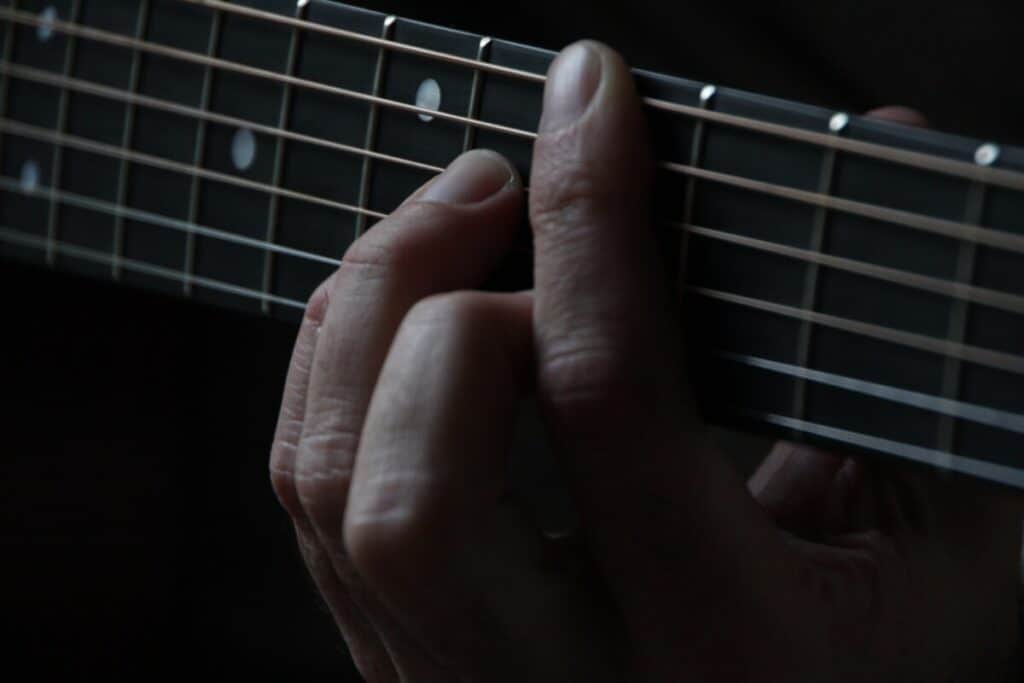
If you’ve got a guitar with a rosewood fretboard, you likely know at this point that you should apply fretboard oil every once in a while to keep it in good shape. Sounds simple enough, right? But if you’re anything like me, this simple action somehow prompts a million questions:
- Do you really need to oil your fretboard?
- How do you apply fretboard oil?
- How much fretboard oil should you use?
- How often should you apply fretboard oil?
- Does fretboard oil expire?
- What’s the best fretboard oil to use?
I found myself frantically googling these things and getting very mixed answers. So I wrote this post to answer all of those questions in one place. By the time you’re finished reading, you’ll know so much about applying fretboard oil that you’ll never want to ask Google about it again.
Do you need to oil your fretboard?
Before we begin, you may be wondering if you even need to oil your fretboard in the first place. In some cases, the answer is actually no.
Finished maple fretboards, popular on many electric guitars and on Fenders in particular, do not require fretboard oil. The wood of the fingerboard is already sealed and has a sheen or gloss to it, so the oil would not be absorbed anyways.
Rosewood fretboards on the other hand, should be oiled from time to time. However – if your rosewood fretboard has been oiled in the past couple months, or doesn’t seem particularly dry, the truth is it may not need any oil. But if it’s dried out or in need of a deep clean, a high quality oil may do your fretboard some good.
How do you apply fretboard oil?
So you’ve determined that your guitar needs some fretboard oil. But how do you actually apply it?
First things first – get those strings off. While some people have tried to apply oil with their strings on, it just makes things so much easier if you remove them. And besides, if you’re already taking the time to do a deep cleaning of your guitar, you should do it during/after a string change anyways. Just make things easy on yourself and kill two birds with one stone.
With your strings removed, apply a little bit of oil to the fretboard of your guitar. I mean a little. You don’t want to use this stuff like it’s going out of style folks. Applying too much oil can oversaturate your fretboard and even cause warping problems down the line.
With the oil on your fretboard, use a simple washcloth, rag, or polishing cloth to work it into the wood of the fretboard. Spread it as evenly as you can over the surface of your guitar’s fingerboard.
After the oil has been applied, simply wipe it off after a few minutes, and you can slap your strings back on your guitar. Voila!
How much fretboard oil should you use?
I stated earlier that you should go easy on the fretboard oil, but let’s get a little more specific. How much of that sweet stuff do you really want on there? The answer is: it depends. It’s going to vary based on personal preference, as well as how dry your fretboard really is.
In general though: you need less fretboard oil than you think. Start small – like a thumb sized amount type of small. Maybe 3 drops, if you’ve got a bottle with a dropper. From there, you can always add more. It’s better to start small and add more if necessary than dump a whole batch of fretboard oil on there. Err on the side of caution my friends.
How often should you apply fretboard oil?
So now you’re wondering how often you really have to apply fretboard oil to your guitar. Every time you change your strings? Every other time? Every month/week?
The truth is, you don’t need to apply fretboard oil all that often. Just as applying too much oil can actually be a negative thing, so too can applying it more often than necessary. Most guitarists find that they only need to apply fretboard oil once or twice a year. Max.
If you’re applying fretboard oil more than three times a year, I promise you your fretboard is not as dry as you think it is. You can save yourself some time and money and cut down your deep cleaning sessions to once, twice, and if really necessary, three times a year.
Does fretboard oil go bad?
Any product with natural ingredients in it can expire. While some bottles won’t have expiration dates, it’s best to use a newer bottle to ensure you’re applying quality oil to your guitar’s fingerboard.
While using an old / expired oil might not do any outright damage, I prefer not to take the chance and to opt for a bottle that’s no older than 3 years or so.
Summary
Well there you have it – you’ve learned everything you need to know about applying fretboard oil to the fingerboard of your acoustic or electric guitar. Maple fretboards don’t need oil, and rosewood ones only need it once in a while. Apply the oil conservatively, and not too often. Use an oil that’s relatively new so you know all the ingredients are quality and not expired.
If you need help with other aspects of fretboard cleaning, like removing/minimizing that annoying gunk that builds up over time, check out our ultimate guide to fretboard cleaning. Or, go longer between each cleaning session by learning how to extend the life of your guitar strings.
If you’re wondering what our favorite fretboard oil is – you truly can’t go wrong with Dunlop’s lemon oil. It’s time tested and a favorite in the industry. Apply a little bit, and wipe it off, and your guitar will be hydrated and playing beautifully for months to come. You can get a great deal on it here on Amazon:
I hope this was helpful! Thanks for reading, and as always, happy picking!

